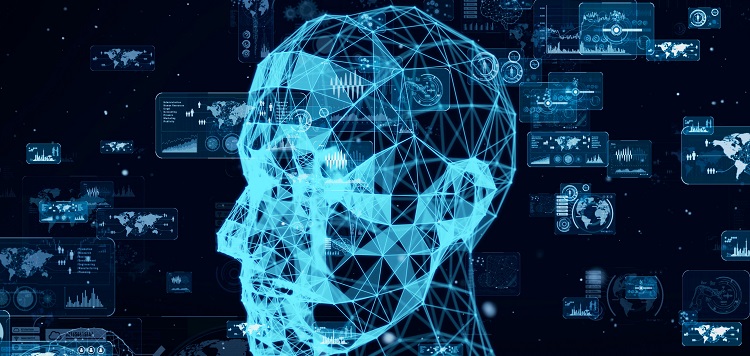Artificial intelligence (AI) and machine learning (ML) are transforming every industry and business niche, including sales and marketing. Many leaders are still struggling to integrate AI and ML into their workflows and maximize their benefits. However, the potential of these technologies is enormous. AI and ML can help businesses automate tedious and repetitive tasks, make smarter decisions, personalize customer experiences, and accelerate growth. In this article, we’ll explore the challenges and opportunities of integrating AI and ML into sales and marketing workflows and provide practical insights on how to achieve clear and profitable results.
The State of Marketing Automation in B2B Organizations: Statistics and Trends
Marketing automation platforms have gained widespread adoption in B2B organizations, with 73% of them installing some type of such a platform. However, according to a recent survey by DemandGen, 63% of them estimate utilizing less than two-thirds of its capabilities. The reasons for this underutilization include poor data quality, lack of training, poor integration with other tools, and inadequate internal processes. However, by fully utilizing the capabilities of marketing automation platforms, organizations can significantly improve their marketing effectiveness, customer engagement, and revenue growth.
Overcoming the Challenges of Marketing Automation: Fully Utilizing Its Capabilities
To fully utilize the capabilities of marketing automation platforms, organizations should start by assessing their data quality, integration needs, and internal processes. They should identify their key marketing goals and define their target audience segments. Additionally, they should create personalized content based on customer insights and behavioral data. They should also automate their lead nurturing and scoring processes using predictive analytics and machine learning models. By optimizing their marketing automation workflows, organizations can drive more traffic, generate more leads, and close more deals.
Demand Generation as a Key Focus for B2B CMOs
B2B CMOs rank demand generation as the top way that marketing can add unique value to organizational strategy. However, demand generation is becoming more complex and challenging due to the increasing fragmentation of the customer journey, the rise of omnichannel marketing, and the need for highly personalized and relevant content. To overcome these challenges, B2B organizations should leverage AI and ML to predict customer needs, preferences, and behaviors. They should use advanced analytics to optimize their marketing channels and investments. Additionally, they should also use dynamic content and personalization techniques to engage their customers across channels and touchpoints.
Predictive Lead Scoring: Using AI and ML to Improve Customer Acquisition
One of the most effective applications of AI and ML in sales and marketing is predictive lead scoring. This technique uses available data sources such as website visits, email interactions, social media engagement, and industry data to help qualify leads more accurately. Predictive lead scoring models can process large amounts of data and identify the most promising leads based on their characteristics, behaviors, and intent. By using predictive lead scoring, sales and marketing teams can focus their efforts on the most valuable leads, improve their conversion rates, and accelerate their revenue growth.
The importance of sales and marketing alignment for revenue growth
Sales and marketing alignment is a critical success factor for revenue growth. However, it remains a challenge for many organizations. Misalignment between these two departments can result in wasted resources, missed opportunities, and customer dissatisfaction. To achieve sales and marketing alignment, organizations should prioritize communication, collaboration, and shared goals. They should use data and analytics to gain a shared understanding of customer behavior and preferences. They should also adopt a customer-centric approach that focuses on delivering value, solving problems, and building relationships.
Leveraging Multithreaded Commercial Engagements for Competitive Advantage
Multithreaded commercial engagements are a powerful approach that involve engaging multiple stakeholders within the customer organization to identify and address their diverse needs and objectives. This approach requires a deep understanding of the customer’s organizational structure, decision-making process, and pain points. By leveraging multithreaded commercial engagements, B2B organizations can increase their deal size, win rates, and customer loyalty. They can also differentiate themselves from the competition by providing more holistic and integrated solutions.
Personalization through AI and ML models
Personalization is becoming increasingly important for both B2B and B2C customers. They expect personalized experiences and solutions that cater to their unique needs and preferences. Some vendors meet this need for 1:1 marketing through the personalization of web experiences or email using data and AI models. By using machine learning algorithms, these vendors can predict individual customer needs, preferences, and behaviors and offer tailored content and offers. Personalization can improve customer engagement, loyalty, and revenue.
The Competitive Landscape: Overcoming Messaging Overload
Even with martech running smoothly, marketers are competing with a myriad of other brands, each generating their own blizzard of messaging. To stand out in this crowded marketplace, marketers need to adopt a customer-centric approach that focuses on delivering value, solving problems, and building relationships. They should use AI and ML to predict customer needs and preferences and tailor their messaging accordingly. Additionally, they should leverage customer advocacy and referral programs to tap into the power of word-of-mouth marketing.
To achieve clear and profitable results with AI/ML workflows in sales and marketing, organizations should ensure that their sales teams are fully engaged and participate in the AI/ML workflow process, gain insight into their vendors’ capabilities, and retrain their models regularly. They should also prioritize demand generation, predictive lead scoring, sales, and marketing alignment, multithreaded commercial engagements, personalization, and customer-centricity to maximize the benefits of AI and ML and stay ahead of their competition in the fast-changing sales and marketing landscape.

